Beam Test Apparatus
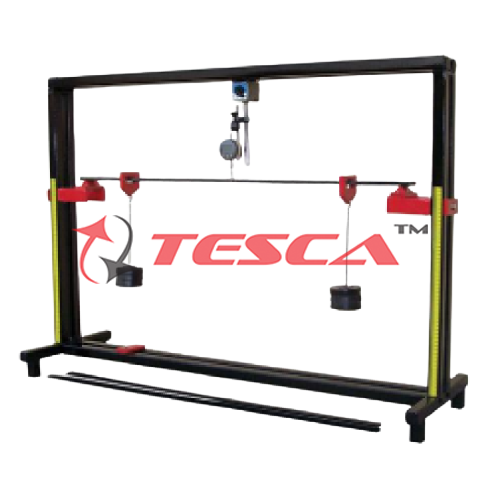
Order Code: 32207
Category: Strength of Materials Lab
Features Ideal for student use and classroom demonstrations Self-contained – needs no other parts Previous Made for maximum flexibility and ease of use for extensive range of experiments Simply supported and cantilever ...
SPECIFICATION
Features
- Ideal for student use and classroom demonstrations
- Self-contained – needs no other parts Previous
- Made for maximum flexibility and ease of use for extensive range of experiments
- Simply supported and cantilever beam tests with up to four supports with any loading
- Three load cells with digital indicators measure reaction forces or act as rigid sinking supports
- Precision digital indicators for accurate deflection measurements
- Weights and hangers supplied to apply point loads
- Supplied with different test beams
Tesca Beam Apparatus allows an extensive range of experiments to cover virtually all course requirements relating to bending of beams. The basic unit provides facilities for supporting beams on simple, built-in and sinking supports, applying point loads, and measuring support reactions and beam deflections. It includes five different test beams. A pack of ten additional specimen beams is available for further experiments.
The Beam Apparatus can be used for an almost limitless number of experiments ranging from determination of the elastic modulus for beams of different materials, through to studies of continuous beams with any loading. Great care has been taken at the design stage to ensure maximum flexibility and ease of use.
The main frame of the apparatus consists of an upper cross-member carrying graduated scales and two lower members bolted to T-legs to form a rigid assembly. The three load cells and cantilever support pillar slide along the lower members and can be clamped firmly in any position. The load cells have direct digital readout and each is fitted with a hardened steel knife edge which can be adjusted to set the initial level or to simulate a sinking support. Locking pins can convert each load cell to a rigid support when required.
The cantilever support is a rigid pillar with a sturdy clamping arrangement to hold the beams when built-in end conditions are required. Four weight hangers and a set of weights are supplied to apply static loads. Three digital indicators measure all beam deflections. The indicators mount on magnetic carriers that slide along the upper cross-member. The indicators, carriers, load cells and weight hangers all have cursors that register on the scale (located on the upper cross-member) to ensure easy, accurate positioning.
The standard test beams are in three thicknesses and include three different materials. They are suitable for the complete range of experiments covering different loading and support configurations. The optional set of beams provide for experiments on different types of beam including compound, channel and non-uniform beams of various materials.
Specifications
Determination of the reaction forces in the supports of a simple supported beam under various loadings; also measurement of loads and moments on a lever; validation of the principal of equilibrium.
The apparatus consists of a beam of approx 1m long, linear spring balances, three load hangers, and a bench top mounting unit.
Technical manual for student and lecturer provided.
1m ruler supplied
Set of weights
Test Beams: 30 nos.
Experiments
- Experimental determination of the reaction forces in the supports of a simply supported beam under various loadings
- Measurement of loads and moments on a lever
- Comparison with calculated results and validation of the principle of equilibrium
Essential Services
Bench space needed:
- 1500 mm x 550 mm
Operating Conditions
Operating environment:
* Laboratory
Storage temperature range:
* –25°C to +55°C (when packed for transport)
Operating temperature range:
* +5°C to +40°C
Operating relative humidity range:
* 80% at temperatures < 31°C decreasing linearly to 50% at 40°C

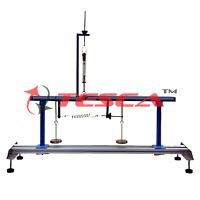
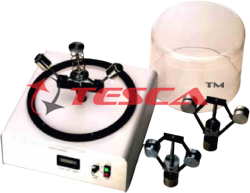
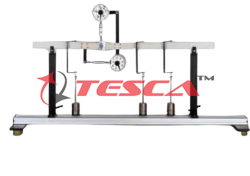

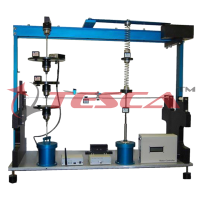
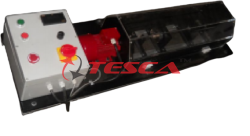
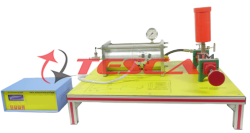
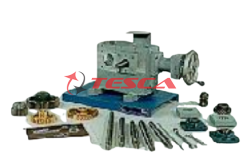
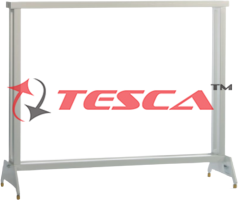

 91-9829132777
91-9829132777